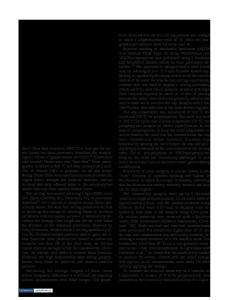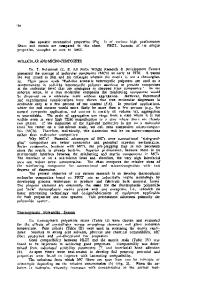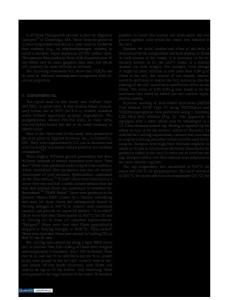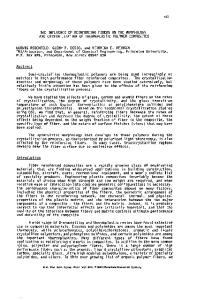Carbon-Nanofibre-Filled Thermoplastic Composites
- PDF / 2,685,359 Bytes
- 6 Pages / 612 x 792 pts (letter) Page_size
- 102 Downloads / 382 Views
Carbon-Nanofibre-filled thermoplastic composites Jan Sandler1, Milo S.P. Shaffer1, Yeng-Ming Lam1, Alan H. Windle1, Philipp Werner2, Volker Altstädt2, Jacek Nastalczyk3, Georg Broza3, Karl Schulte3, Christian-André Keun4 1 Department of Materials Science and Metallurgy, University of Cambridge, Pembroke Street, Cambridge, CB2 3QZ, UK 2 Polymer Engineering, University of Bayreuth, Universitätsstraße 30, D-95440 Bayreuth, Germany 3 Polymer Composites, Technical University Hamburg-Harburg, Denickestraße 15, D-21073 Hamburg, Germany 4 NYH AG, Nartenstraße 12, D-21079 Hamburg, Germany ABSTRACT Macroscopic poly(ether ether ketone) (PEEK) and polypropylene (PP) nanocomposites containing vapour-grown carbon nanofibres (CNF) were produced using standard polymer processing. Tensile tests revealed a linear increase in composite stiffness with nanofibre content. A detailed DSC study verified that under standard processing conditions the degree of crystallinity and the crystalline structure of these semicrystalline thermoplastics were not affected by the nanofibres. Nevertheless, we provide evidence that the nanoscale filler can alter the polymer morphology under certain conditions, an effect which needs to be considered when evaluating nanocomposite properties. Given the absence of morphological changes in the standard nanocomposites we were able to calculate the intrinsic nanofibre modulus using short fibre theory; both distinctively different matrix systems show a similar effective nanofibre modulus. INTRODUCTION Carbon fibres are widely used today as reinforcements for polymer matrices in many high-technology applications on account of their high specific tensile modulus and strength. The intriguing mechanical properties of carbon nanotubes, especially those measured in direct tensile tests [1,2], have focussed attention on carbon nanotubes as the ultimate reinforcement. Polymer nanocomposites enable both an evaluation of the fundamental properties of the reinforcing nanophase and the development of novel composites with improved physical and mechanical properties. For an analysis of the mechanical properties of the nanoscale fillers, continuum mechanical approaches developed for macroscopic fibres have been successfully applied [3,4,5]. The exploitation of the full potential of nanotubes depends on achieving a high quality of dispersion, alignment, and interfacial bonding, as does an accurate estimation of the intrinsic nanotube properties. Furthermore, possible interactions between the polymer matrix and the nanoscale phase during processing need to be considered when analysing composite properties. The microstructure, in terms of crystallinity, spherulite size, and orientation of the crystallites, of a semicrystalline polymer is dependent on its thermal history and the manufacturing process employed [6], as well as the presence of possible nucleation sites [7].
Z4.7.1
Carbon fibre reinforced poly(ether ether ketone) is a good example of a polymer composite where the matrix morphology and, therefore, the matrix properti
Data Loading...











